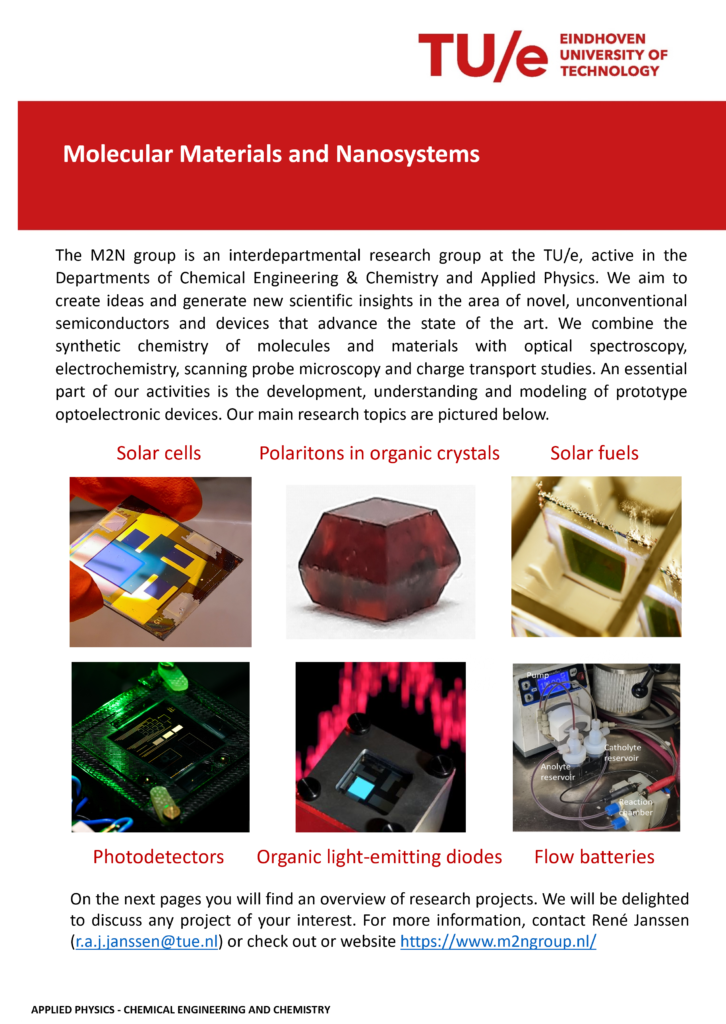Bachelor projects
The M2N group welcomes Bachelor students from Chemical Engineering and Chemistry and Applied Physics at the TU/e to perform their final project. For general information on our research program and possible topics for your final BSc project, please contact René Janssen. We will be happy to discuss the options with you to tailor your project to your interest and talents.
Some current options for Bachelor Projects:
- Wide‐bandgap lead bromide perovskites, contact Laura Bellini
- Optimizing the electron transport layer for mixed Pb‐Sn perovskite solar cells, contact Lana Kessels
- Polar organic crystals, contact Rens Cuijpers
- Polymer interlayers for perovskite solar cell interface passivation, contact Guus Aalbers
- Optimizing electron transport layer formation in wide-bandgap perovskite solar cells by solvent and additive engineering, contact Nick Schipper
- Temperature-dependent charge recombination mechanisms in perovskite solar cells, contact Guus Aalbers
- Highly‐sensitive photocurrent spectroscopy to find defects in n‐i‐p perovskite solar cells, contact Guus Aalbers
For other options, please see the list below for topics and contact persons:
 Solar cells, polaritons and photodiodes
Solar cells, polaritons and photodiodes
Solar cells. Contact: René Janssen or Martijn Wienk
Polaritons in organic semiconductors. Contact: Stefan Meskers
Photodiodes. Contact: René Janssen
Organic light-emitting diodes
Monte Carlo simulations. Contact: Reinder Coehoorn or Peter Bobbert
Pulsed photoluminescence experiments. Contact: Reinder Coehoorn
Models for hopping transport in organic semiconductors. Contact: Peter Bobbert
Storing renewable energy
Solar fuels. Contact: René Janssen
Oxygen evolution recation. Contact: Kees Flipse
Organic redox flow batteries. Contact: René Janssen